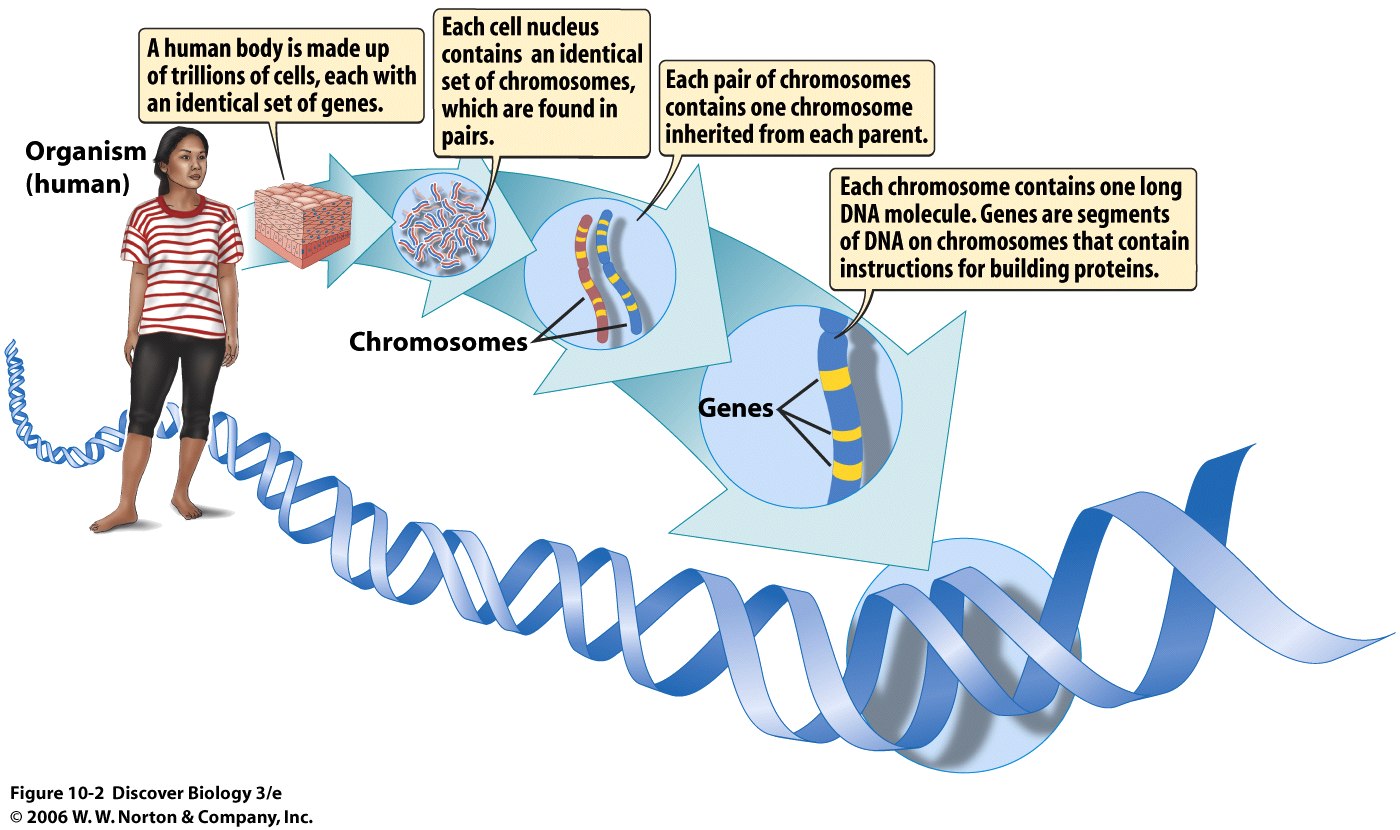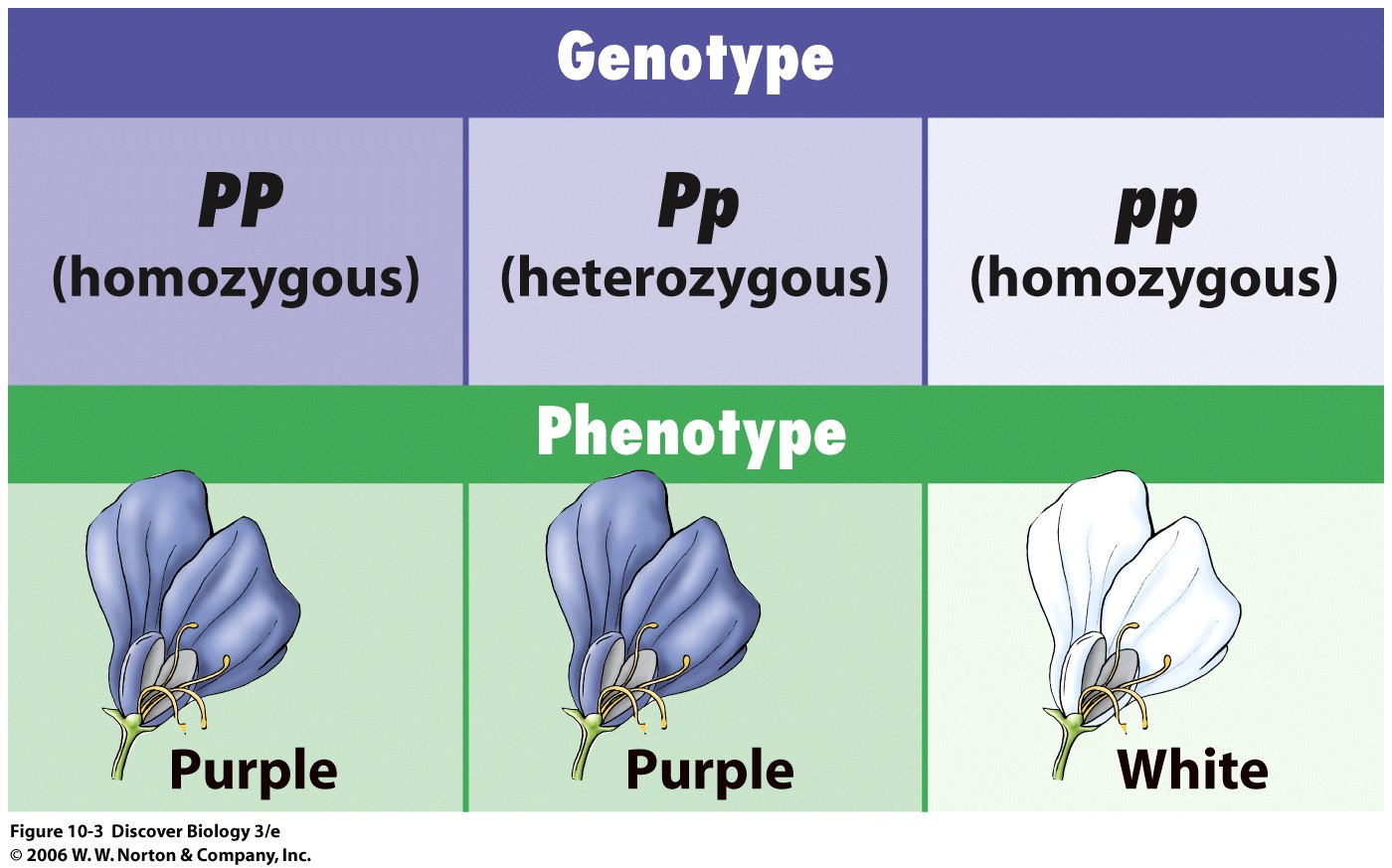
BIO 7: Lecture 26 Preview
The characteristics seen in organisms are determined by their DNA, which is in their chromosomes, which come from their parents in a predictable way. Homologous chromosomes are the same size and shape and carry information to make the same proteins and determine the same traits. Humans have 23 pairs of homologous chromosomes (23 from Ma and 23 from Pa); each species has its own chromosome number.

Meiosis is a key nuclear division process in the formation of gametes, which carry the chromosomes passed from parent to offspring. Meiosis differs from mitosis in terms of in what cells it occurs, how many divisions occur, how the chromosomes line up and separate in the first division, how many chromosomes end up in the daughter cells, and how many daughter cells result.
| MEIOSIS | MITOSIS | |
| What cells carry it out and how many sets of chromosomes do they have? | ||
| How many divisions occur? | ||
| What lines up and separates during the first (or only) division? | ||
| How many daughter cells are produced and how many sets of chromosomes do they have? |
Sexual reproduction results in
offspring that differ from their parents. Mendel recognized patterns that
showed how the differences arose,
EVEN THOUGH HE DID NOT KNOW ABOUT CHROMOSOMES AND DNA (how cool is
that!).
MENDELíS
SCIENTIFIC APPROACH
1.
Chose a convenient test organism
-short life cycle
-many offspring
-traits with clearly different forms
-easily manipulated
2.
Looked at simple picture first
3.
Counted offspring and recognized patterns in numbers
4.
Tested hypotheses by making more crosses
MENDELíS BASIC EXPERIMENT
1. Obtained pure- or true-breeding lines
2.
Crossed parents from pure-breeding (pb) lines having different forms of
traits, to see how determinants of traits behaved.

Cross of 2 pb parents with
different forms of one trait
e.g. trait =
color pb purple x pb white Parental (P)
gen.
|
V
All purple First filial (F1)
gen.
F1 x F1
|
V
705 purple and 224 white F2 generation
Mendelís Model for
Information for One Trait
1. Individuals have 2 genes for each trait (one from each parent) and pass on one gene for each trait to each offspring.
Law of Segregation:
2 genes for a trait separate and only one or
the other is passed on to an offspring.
2.
Different forms of genes (alleles)
determine different forms of traits.
3.
Individuals can have 2 identical alleles
for a trait or 2 different alleles for a trait. When there are two different
alleles,
only one allele
is expressed in the phenotype.
Law of Dominance: In a heterozygote one allele is expressed in the phenotype over the other; the allele expressed in the heterozygote is the dominant allele.
MENDEL'S KEY DISCOVERY: ORGANISMS HAVE GENOTYPES AND PHENOTYPES

Based on this model, outcomes of crosses can be predicted for traits determined by one pair of genes--one from the egg + one from the sperm. Keep track of contributions from parent to offspring with a Punnett Square.
